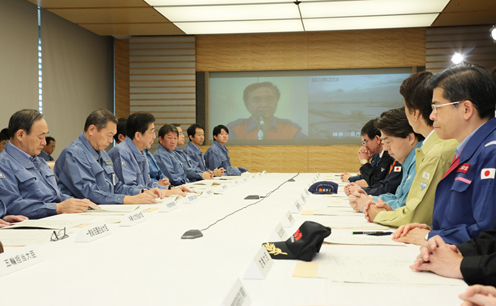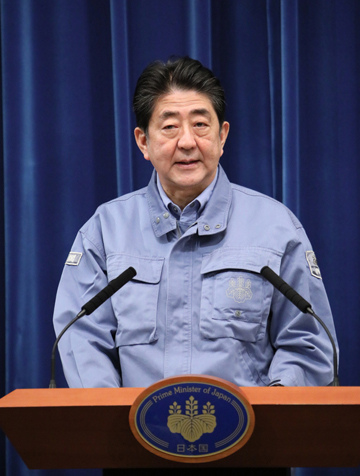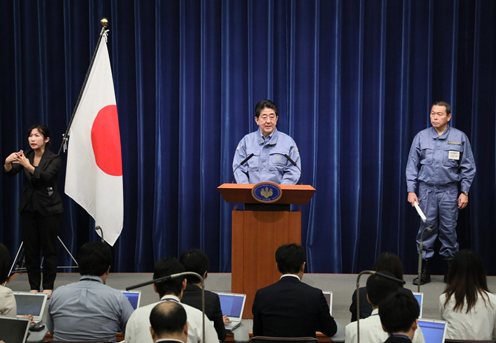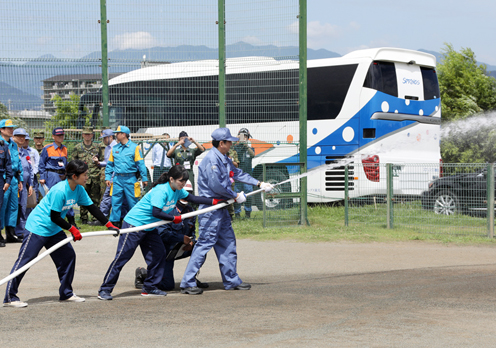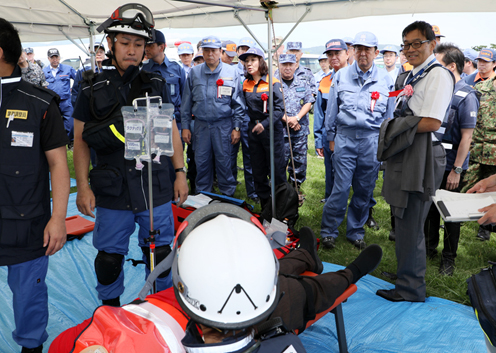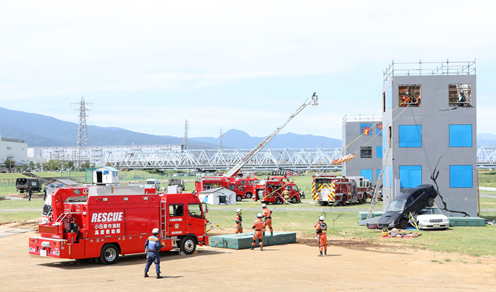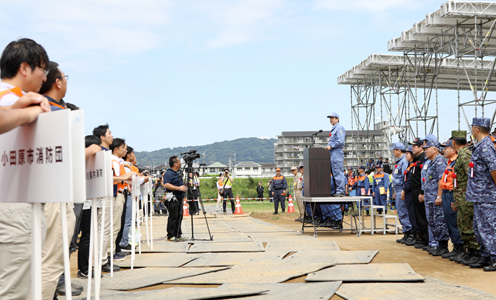Home > News > The Prime Minister in Action > September 2017 > Disaster Prevention Day Drills for FY2017
The Prime Minister in Action
Disaster Prevention Day Drills for FY2017
September 1, 2017
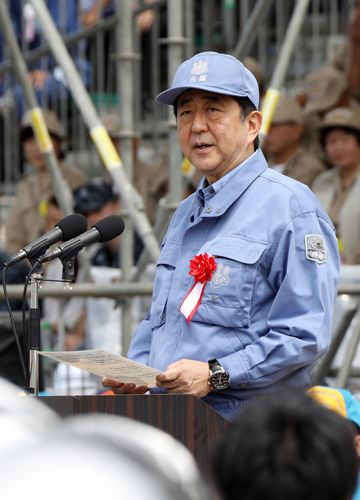
Photograph of the Prime Minister delivering an address during joint disaster prevention drills by the nine municipalities in the Kanto region (1)
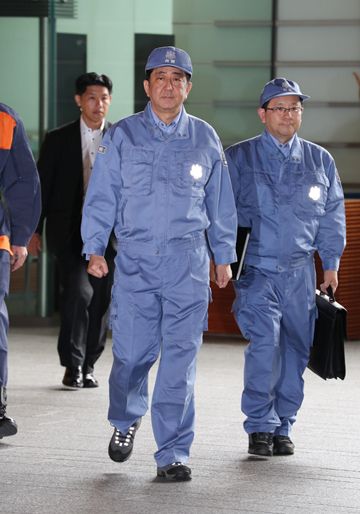
Photograph of the Prime Minister walking to the assembling point
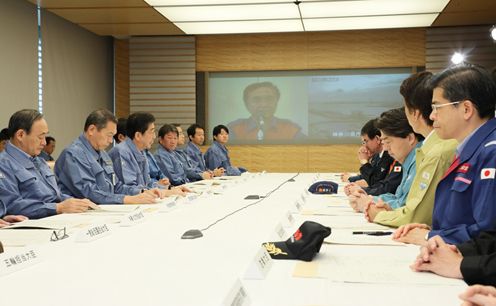
Photograph of the Prime Minister attending the meeting of the Emergency Disaster Response Headquarters
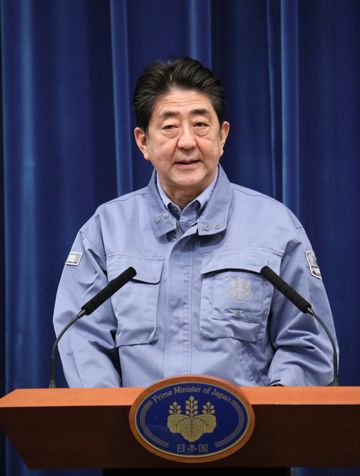
Photograph of the Prime Minister holding a press conference (1)
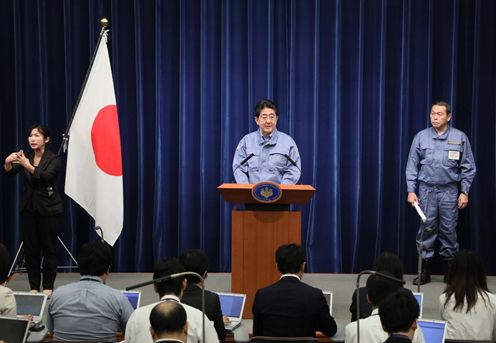
Photograph of the Prime Minister holding a press conference (2)

Photograph of the Prime Minister participating in the fire hose drill
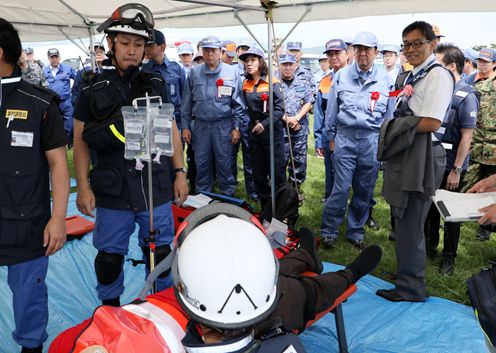
Photograph of the Prime Minister observing the first-aid station drill
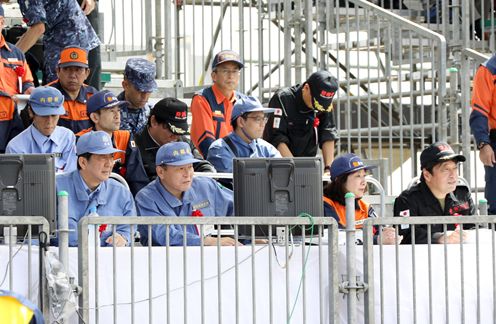
Photograph of the Prime Minister observing the rescue and assistance drill
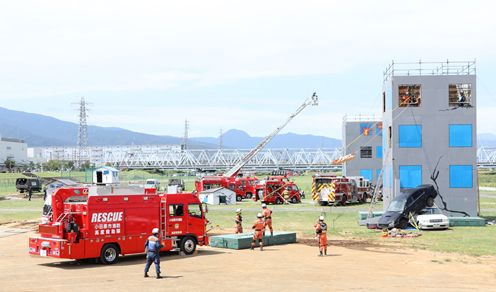
Photograph of the rescue and assistance drill
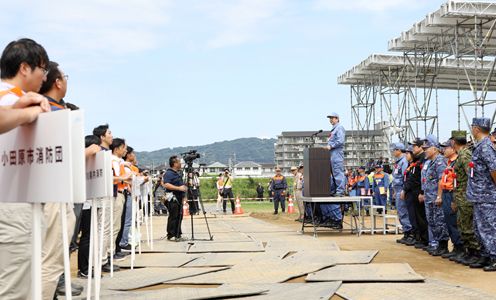
Photograph of the Prime Minister delivering an address during joint disaster prevention drills by the nine municipalities in the Kanto region (2)
[Provisional Translation]
The annual comprehensive disaster prevention drills for 2017 were held on September 1 (Japan's National Disaster Prevention Day). Prime Minister Shinzo Abe took part in the drills together with all Cabinet members.
This year, the drills were conducted based on a scenario in which a Tokyo Inland Earthquake occurred at 7:10 a.m., with a magnitude of 7.3, a maximum seismic intensity of 7, and its epicenter under the 23 wards of Tokyo.
As part of the drills, the Prime Minister walked to the assembling point at the Prime Minister’s Office and held the first meeting of the Emergency Disaster Response Headquarters and an emergency Cabinet meeting. Afterwards, the Prime Minister held a press conference to explain the overview of the earthquake and the status of the Government's response, and to give a message to the people.
Then, by helicopter, the Prime Minister led a government inspection team to the venue in Odawara City, Kanagawa Prefecture, where the joint disaster prevention drills were being conducted by the nine municipalities in the Kanto region. At the venue, the Prime Minister participated in a fire hose drill, and then observed a first-aid station drill and a rescue and assistance drill.
The Prime Minister said in his address at the closing ceremony of the drills,
“It is of great significance that disaster prevention day drills of this scale were held today, with the participation of approximately 140 organizations and approximately 3,000 people, including the people of Odawara City and Kanagawa Prefecture, the Self-Defense Forces, the police departments, the fire departments and the Disaster Medical Assistance Team (DMAT) of the nine participating municipalities as well as members of the private sector, including designated public institutions.
In particular, approximately 1,100 elementary, junior high, and high school students on whom the future of Japan rests participated in today’s drill, and they did so wholeheartedly. Thank you, everyone.
The natural conditions of Japan make all parts of the country prone to disasters, such as earthquakes, typhoons, heavy rains, and volcanic eruptions.
This summer as well, significant damage was caused in each region of Japan by the torrential rains and typhoons resulting from the seasonal rain front. I wish to once again extend my condolences for those who lost their lives and my sympathies to all the affected people.
The Government will exert every effort for the restoration and reconstruction of the affected areas to ensure that people can resume their lives as soon as possible.
In order to overcome disasters, it is important that, as part of their daily lives, each and every person is mentally and practically prepared for times of emergency.
I hope that practical and realistic drills like the one conducted today will help people in the region and the organizations involved in disaster prevention regularly develop strong relations, deepen understanding about the activities that should be carried out during times of disaster, and reinforce disaster preparations.
The Government will take all necessary disaster prevention measures in order to protect the lives and property of the Japanese people against major disasters, including Tokyo Inland Earthquakes, which some fear may occur, while fully drawing upon the valuable lessons learned from events such as the Great East Japan Earthquake and Kumamoto Earthquake. Today, members of the U.S. Forces in Japan participated in the drills. I would like to express my gratitude to them for training together with us as well.
In closing today, I would like to express my sincere appreciation to everyone for their wholehearted participation in today’s drills. Thank you for your excellent work. Thank you.”
After the drills, the Prime Minister stated in response to questions from the press,
“It is extremely important and vital that we thoroughly implement effective measures for mitigating any damage that might be caused by inland earthquakes.
To that end, the Government will continue to systematically and strategically implement measures for the extensive mitigation of home collapses and fires, as well as the loss of life, through such means as efforts to make homes more earthquake resistant and the widespread use of seismically-certified circuit breakers.
In addition, concerning disasters that rapidly spread damages, such as torrential rains, we will strive to provide and communicate detailed information so that local public bodies can issue evacuation orders without hesitation.
We will continue to thoroughly advance disaster responses that are best suited to disasters of various types, and that balance self-help, mutual support, and public assistance so as to save as many lives as possible.”



